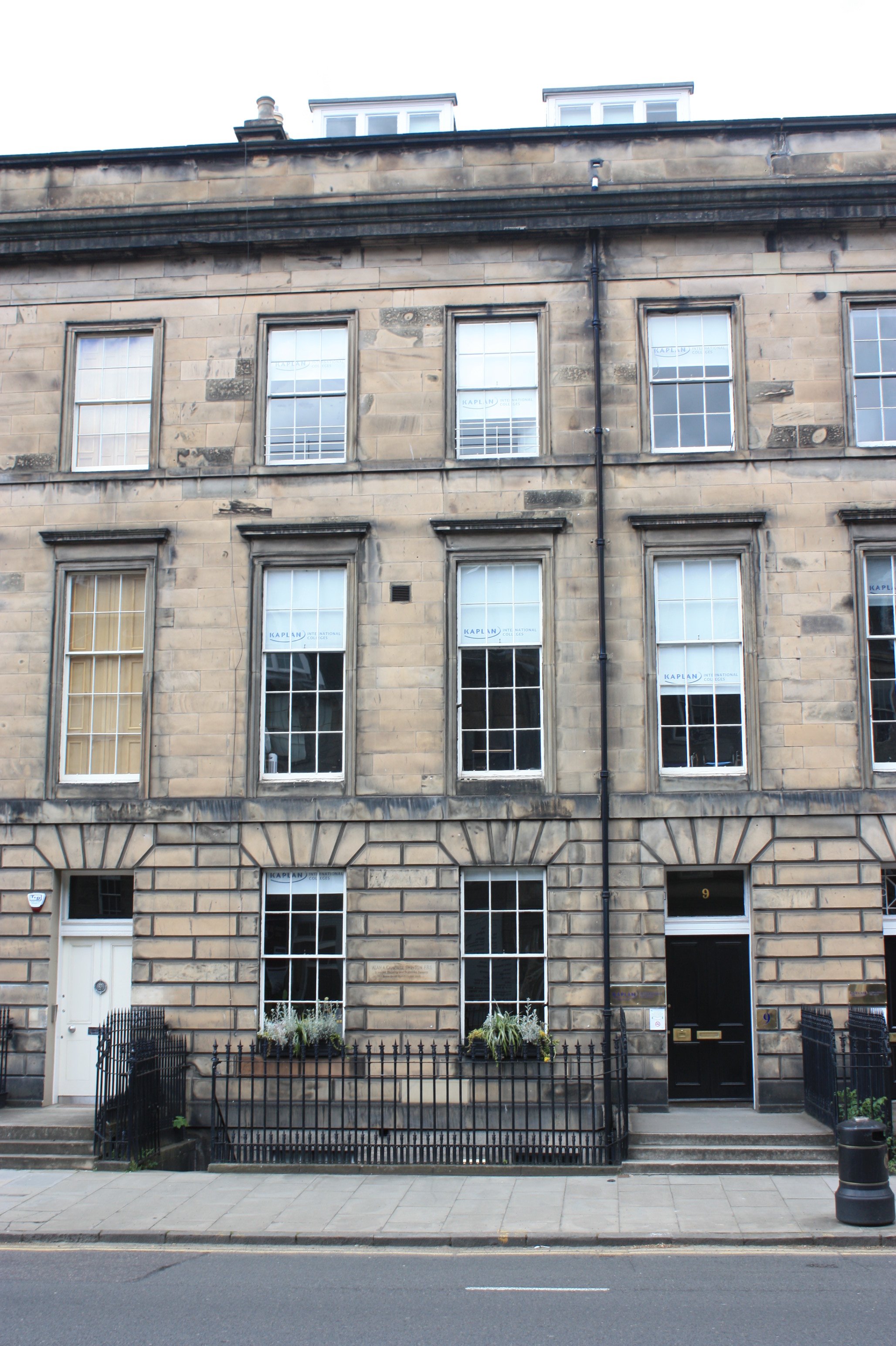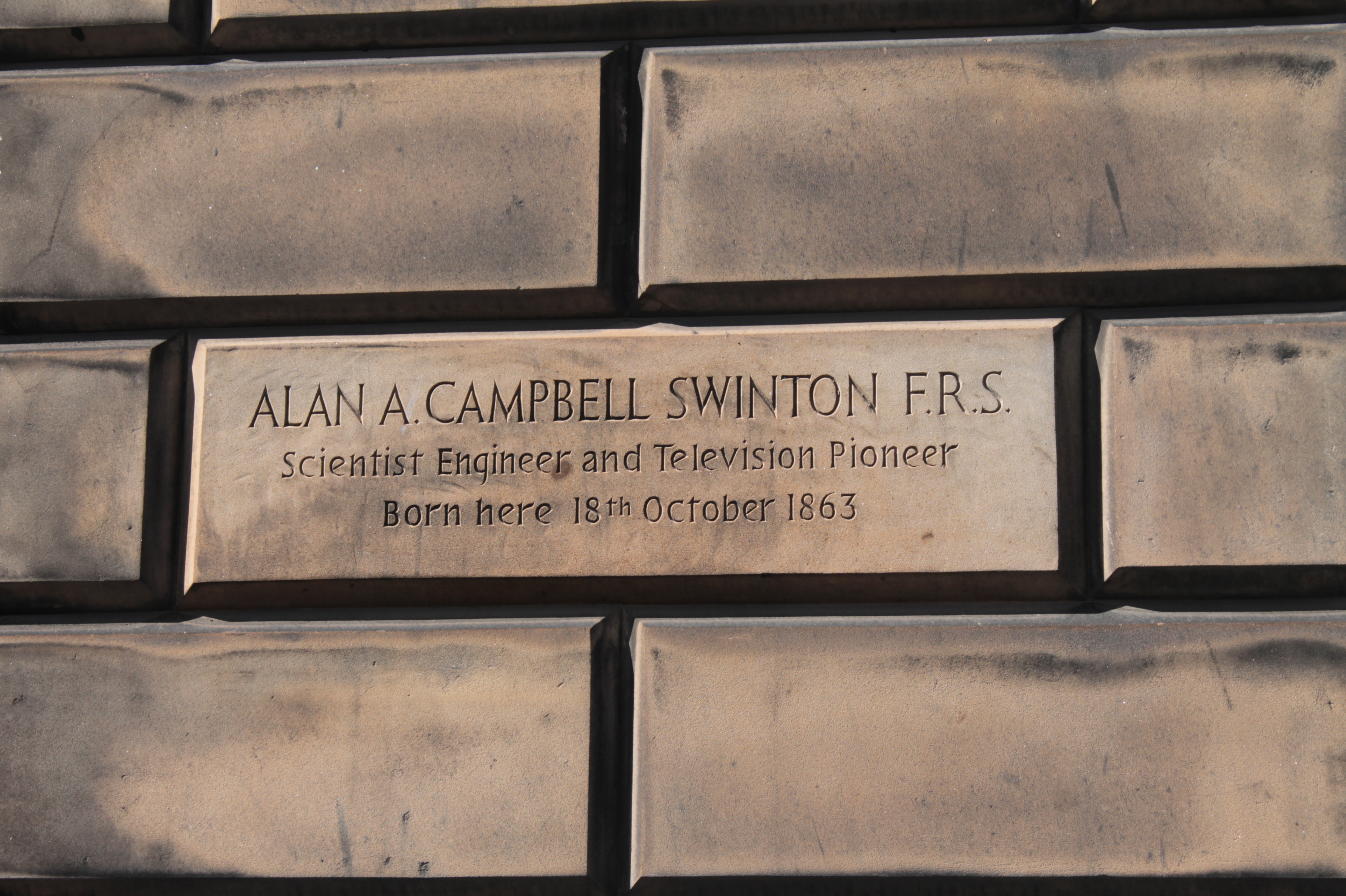Alan Archibald Campbell-Swinton on:
[Wikipedia]
[Google]
[Amazon]
 Alan Archibald Campbell-Swinton FRS (18 October 1863 – 19 February 1930) was a Scottish consulting
Alan Archibald Campbell-Swinton FRS (18 October 1863 – 19 February 1930) was a Scottish consulting
 He was born in
He was born in
 Alan Archibald Campbell-Swinton FRS (18 October 1863 – 19 February 1930) was a Scottish consulting
Alan Archibald Campbell-Swinton FRS (18 October 1863 – 19 February 1930) was a Scottish consulting electrical engineer
Electrical engineering is an engineering discipline concerned with the study, design, and application of equipment, devices, and systems which use electricity, electronics, and electromagnetism. It emerged as an identifiable occupation in the l ...
, who provided the theoretical basis for the electronic television
Television, sometimes shortened to TV, is a telecommunication medium for transmitting moving images and sound. The term can refer to a television set, or the medium of television transmission. Television is a mass medium for advertising, ...
, two decades before the technology existed to implement it.Oakes, Elizabeth (2009), ''A to Z of STS Scientists''. Infobase publishing, pp. 51. He began experimenting around 1903 with the use of cathode ray tubes for the electronic transmission and reception of images. Campbell described the theoretical basis for an all electronic method of producing television in a 1908 letter to ''Nature
Nature, in the broadest sense, is the physical world or universe. "Nature" can refer to the phenomena of the physical world, and also to life in general. The study of nature is a large, if not the only, part of science. Although humans are ...
''. Campbell-Swinton's concept was central to the cathode ray television because of his proposed modification of the cathode ray tube that allowed its use as both a transmitter and receiver of light. The cathode-ray tube was the system of electronic television that was subsequently developed in later years, as technology caught up with Campbell-Swinton's initial ideas. Other inventors would use Campbell-Swinton's ideas, as a starting-point to realise the cathode ray tube television as the standard, workable form of all electronic television that it became for decades after his death. It is generally considered that the original credit for the successful theoretical conception of using a cathode ray tube device for imaging should belong to Campbell-Swinton.
Life
 He was born in
He was born in Edinburgh
Edinburgh ( ; gd, Dùn Èideann ) is the capital city of Scotland and one of its 32 Council areas of Scotland, council areas. Historically part of the county of Midlothian (interchangeably Edinburghshire before 1921), it is located in Lothian ...
the son of advocate Archibald Campbell Swinton
Archibald Campbell Swinton of Kimmerghame FRSE DL LLD (15 July 1812 – 27 November 1889), was a Scottish author, politician and professor of civil law at Edinburgh, 1862-72.
Early life and family
Archibald Campbell Swinton was born the el ...
.
Campbell-Swinton was educated at Cargilfield Trinity School and Fettes College
Fettes College () is a co-educational independent boarding and day school in Edinburgh, Scotland, with over two-thirds of its pupils in residence on campus. The school was originally a boarding school for boys only and became co-ed in 1983. In ...
(1878–1881).
He was one of the first to explore the medical applications of radiography
Radiography is an imaging technique using X-rays, gamma rays, or similar ionizing radiation and non-ionizing radiation to view the internal form of an object. Applications of radiography include medical radiography ("diagnostic" and "therapeu ...
, opening the first radiographic laboratory in the United Kingdom in 1896. He was elected a Fellow of the Royal Society
Fellowship of the Royal Society (FRS, ForMemRS and HonFRS) is an award granted by the judges of the Royal Society of London to individuals who have made a "substantial contribution to the improvement of natural knowledge, including mathemati ...
in 1915. He is better known by his work on the electronic television. He discovered the phenomenon known as '' magnetic focusing'' in 1896, he found that a longitudinal magnetic field generated by an axial coil can focus an electron beam.
Campbell-Swinton wrote a letter in response to an article in the 4 June 1908 issue of ''Nature'' by Shelford Bidwell entitled "Telegraphic Photography and Electric Vision". Even as early as 1908, it was recognised that "The final, insurmountable problems with any form of mechanical scanning were the limited number of scans per second, which produced a flickering image, and the relatively large size of each hole in the disk, which resulted in poor resolution".
Campbell-Swinton's letter
was published in the 18 June 1908 issue of ''Nature''. The name of the article is "Distant Electric Vision". He wrote: "This part of the problem of obtaining distant electric vision can probably be solved by the employment of two beams of cathode rays (one at the transmitting and one at the receiving station) synchronously deflected by the varying fields of two electromagnets placed at right angles to one another and energised by two alternating electric currents of widely different frequencies, so that the moving extremities of the two beams are caused to sweep simultaneously over the whole of the required surface within the one-tenth of a second necessary to take advantage of visual persistence. Indeed, so far as the receiving apparatus is concerned, the moving cathode beam has only to be arranged to impinge on a suitably sensitive fluorescent screen, and given suitable variations in its intensity, to obtain the desired result."
He gave a speech in London in 1911 where he described in great detail how distant electric vision could be achieved. This was to be done by using cathode ray tube
A cathode-ray tube (CRT) is a vacuum tube containing one or more electron guns, which emit electron beams that are manipulated to display images on a phosphorescent screen. The images may represent electrical waveforms ( oscilloscope), ...
s (CRTs) at both the transmitting and receiving ends. The photoelectric screen in the proposed transmitting device was a mosaic of isolated rubidium cubes.
This was the first iteration of the electronic television which is still in use today. When Swinton gave his speech others had already been experimenting with the use of cathode ray tubes as a receiver, but the use of the technology as a transmitter was unheard of. His concept for a fully electronic television system was later popularised by Hugo Gernsback as the ''"Campbell-Swinton Electronic Scanning System"'' in the August 1915 issue of the popular magazine ''Electrical Experimenter''.
In 1914 he once again described his system in his presidential address to the Roentgen Ray Society and in 1921 a book was published describing it in some detail.
He himself described his system seven years later in the June 1928 issue of '' Modern Wireless'', "Television by Cathode Rays".
:''"Surely it would be better policy if those who can afford the time and money would abandon mechanical devices and expend their labours in what appears likely to prove the ultimately more promising method in which the only moving parts are imponderable electrons."''
In a letter to ''Nature
Nature, in the broadest sense, is the physical world or universe. "Nature" can refer to the phenomena of the physical world, and also to life in general. The study of nature is a large, if not the only, part of science. Although humans are ...
'' published in October 1926, Campbell-Swinton also announced the results of some "not very successful experiments" he had conducted with G. M. Minchin and J. C. M. Stanton. They had attempted to generate an electrical signal by projecting an image onto a selenium-coated metal plate that was simultaneously scanned by a cathode ray beam.
These experiments were conducted before March 1914, when Minchin died,
but they were later repeated by two different teams in 1937, by his students H. Miller and J. W. Strange from EMI,
and by H. Iams and A. Rose from RCA
The RCA Corporation was a major American electronics company, which was founded as the Radio Corporation of America in 1919. It was initially a patent trust owned by General Electric (GE), Westinghouse, AT&T Corporation and United Fruit Comp ...
.
Both teams succeeded in transmitting "very faint" images with the original Campbell-Swinton's selenium-coated plate, but much better images were obtained when the metal plate was covered with zinc sulphide or selenide, or with aluminium or zirconium oxide treated with caesium. These experiments are the base of the future vidicon
Video camera tubes were devices based on the cathode ray tube that were used in television cameras to capture television images, prior to the introduction of charge-coupled device (CCD) image sensors in the 1980s. Several different types of tubes ...
.
Alongside his research into the electrical transmission of images, Campbell-Swinton also worked in voice telephony, founding the short-lived Equitable Telephone Association in the 1880s.
See also
*Clan Swinton
Clan Swinton is a Scottish clan of the Scottish Lowlands.Way, George and Squire, Romily. (1994). ''Collins Scottish Clan & Family Encyclopedia''. (Foreword by The Rt Hon. The Earl of Elgin KT, Convenor, The Standing Council of Scottish Chiefs) ...
References
{{DEFAULTSORT:Campbell-Swinton, Alan Archibald 1863 births 1930 deaths People from Berwickshire Engineers from Edinburgh People educated at Fettes College Projectional radiography Scottish electrical engineers British electronics engineers Scottish businesspeople Scottish inventors Television pioneers Fellows of the Royal Society Presidents of the Smeatonian Society of Civil Engineers People educated at Cargilfield School